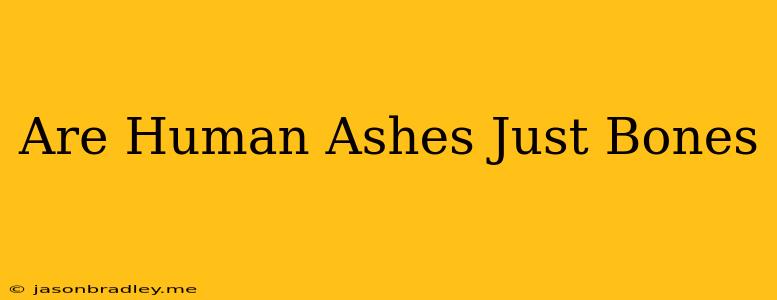What Happens to Our Bodies After Cremation? Are Human Ashes Just Bones?
The question of what happens to our bodies after cremation is a common one, often accompanied by the misconception that ashes are just bones. While it's true that cremation involves reducing the body to its most basic components, the resulting ash isn't solely composed of bone.
Here's a closer look at the cremation process and the composition of cremains:
The Cremation Process
Cremation involves placing the body in a cremation chamber and exposing it to intense heat, typically around 1400-1800 degrees Fahrenheit. This high temperature vaporizes all soft tissues, leaving behind only bone fragments. These fragments are then ground into a fine powder, known as cremains.
What are cremains composed of?
While bones are a significant component of cremains, they aren't the only thing present. Cremains also contain residual minerals from other parts of the body, including teeth, cartilage, and even traces of the deceased's belongings.
The amount of ash produced varies depending on several factors, including:
- Body size and weight
- Presence of implants or prosthetics
- Length of time in the cremation chamber
Essentially, cremains are a mixture of bone fragments and various minerals, not just pulverized bone.
The Misconception About Bone
The misconception that ashes are just bones likely stems from the fact that bones are the most prominent component after the cremation process. However, cremation doesn't turn the body into a pile of bone dust. It reduces the body to its most basic elements, leaving behind a mixture of bone and mineral particles.
In Conclusion
While cremains may appear as a fine powder, they are far more complex than just pulverized bones. The process of cremation reduces the body to its most basic components, resulting in a mixture of bone and mineral particles. The next time someone asks about the composition of cremains, you can confidently explain that they are not just bones but a mixture of various elements representing the deceased.
